Jacaré
Jacaré do Pantanal
Of the two jacaré species, the most numerous by far is the Jacaré-do-Pantanal or Caiman Yacare. As its portuguese name suggests, the species is endemic to the Pantanal region - being highly visible in significant numbers around lakes and along riverbanks. In fact, with around 10 million of them in the Pantanal they're hard to miss.
Jacaré are smaller than their alligator cousins, although the jacare-do-pantanal still generally reaches around 2.5m. Despite their toothy look, the species is usually fairly timid. It’s common to see people getting close, and even swimming in the same waters with them. In fact, the pantanal must be one of the few places where the sight of these reptiles is seen as a positive sign by swimmers ... since they keep down the number of piranha. Nonetheless, caution is important as jacaré can turn aggressive - particularly females when protecting the area around their nest.
A typical Pantanal jacaré exhibiting black spots along the jaw. Notice one of the lower teeth poking up through the top of its snout. Photo: Andrew Mercer.
Pantanal jacaré are dark or olive green in colour, with prominent black spots visible along the lower jaw, and often with some of the lower teeth visible poking up through their upper snout. Eyes and nostrils are located at the top of their head so these poke out above the water surface when submerged. When seen on riverbanks, its common to see jacaré sitting basking in the sun with their mouths gaping wide open as a way to help them regulate their body heat. The pantanal jacaré were previously categorised as a sub-species of the Spectacled Caiman (Caiman crocodilus) found in northern areas of Brazil and the Amazon - but have recently been recognised as being their own distinct species.
Jacaré de Papo Amarelo
The second jacaré species, Jacaré de papo amarelo (yellow-chinned jacaré), also known as the Broad-Snouted Caiman, has a nastier reputation amongst the locals. This is said to have been responsible for attacks on humans - although admittedly still rare. This has a yellowish lower jaw, without the black spots, and a broader snout. Because it's difficult to tell the species apart, especially when in the water, its important for visitors to always treat jacarés with respect and to keep a reasonable distance. This species is also found further outside the Pantanal - predominantly across south-eastern Brazil, including lagoons in some urban areas around Rio de Janeiro.
Jacaré-de-papo-amarelo, exhibiting its broader and rounder snout. Note the lack of teeth protruding through the upper snout. Photo: Lauro Sirgado/Wikimedia.
Night-Time Jacaré Safaris
A common highlight of most visitors' Pantanal experience is the night-time jacaré hunt. Jacaré are easy to find at night with the use of strong torch or spotlight. This picks up the reflection of the jacarés' eye - which glow red or orange. Pantanal guides can then get close to juveniles and safely capture them. This provides visitors with an opportunity to see the jacare up close and to learn a little about its physiology. For example, when placed back in the water you can briefly see the tranparent membrane which slides across to protect its eyes when underwater. Although some environmentalists have complained that this handling of animals is potentially traumatic, it is less so if treated carefully and not removed too far from its home. Its also valuable, as visitors who learn to respect and appreciate nature are more likely to protect these animals' natural habitats in future.
Jacaré Caiman
Scientific Name
Local Name
Description
Caiman Yacare
Jacaré-do-Pantanal
Alligator-like. Olive green, often with black spots on the lower jaw, Adults reach around 2.5m in length.

Broad-Snouted Caiman
Scientific Name
Caiman latirostris
Local Name
Description
Jacaré-de-papo-amarelo
(yellow-chinned caiman)
Distinguished from the jacaré-do-pantanal by the yellowish lower jaw, with a broader and rounder shape.
Range of the Caiman Yacaré. This is the species most commonly encountered in the Pantanal. The dotted line shows the range of the closely related Spectacled Caiman (Caiman crocodilus).
The Broad-snouted caiman (locally known as Papo Amarelo is the other species encountered in the Pantanal. It is less frequent, but has a reputation for being more aggressive.
Hunting
The hunting of jacarés, primarily for their skins, was a major industry throughout the Pantanal. Even though it became illegal in the 1960s, poaching remained rampant. In the 1980s, it is estimated that more than five million jacaré were killed in the Pantanal, with their skins being smuggled to Europe, the United States, Asia and Paraguay. Although some poaching still occurs, improved law enforcement, and a recognition that Pantanal jacaré are a more valuable resource alive, as a favourite sight for tourists, has helped reduce the poaching impact. According to locals, the number of jacaré visible has increased with population densities now around ten times higher than in the 1970s. Another significant contribution to conservation has been the advent of jacaré farming - breeding and raising large numbers of jacaré in captivity to provide a reliable and legal alternative supplying the skin trade, as well as meat for restaurants and export. Some of these facilities have also been releasing significant numbers of jacaré back into the wild, helping to re-establish populations previously affected by poaching. A good example of this industry is the Cooperativa de Criadores de Jacaré do Pantanal (Coocrijapan) based in the northern Pantanal town of Cáceres.
Behaviour
In the dry season, jacaré can be seen in abundance around bays, waterways, and even artificial cattle ponds - wherever they can find food such as fish, birds, amphibians, snails, insects and crustaceans. Although the dry season can bring difficulties - it can also bring the occasional feast as large concentrations of fish, trapped in drying ponds, become easy prey. However, this comes with some danger for jacaré, as they can also become trapped in the drying mud. In the wet wet season, which corresponds with the annual piracema (fish spawning), gatherings of jacaré can occasionally be seen laying in wait along rapids and small waterfalls - waiting for hapless to pass by too close as they swim upstream. In mating season, male jacaré will call to females with low booms. Sometimes these are too low to be heard by the human ear - but the sight is unmistakeable, as the males sit U-shaped with their head and tail poking out of the water, and as the water around them appears to dance as it vibrates due to the low-pitched sounds they are making.
After mating, females lay approximately 50 eggs in a nest made from leaves and plant stems. This nest is designed to keep the eggs at near optimum - with the mother also staying close by to protect the nest until her young have hatched. Potential predators of jacaré eggs include coati, tegu lizards and even man. Once hatched, the young jacaré still aren't safe - although the mother may remain around, the young are easy prey for birds, snakes, predatory fish (such as piranha and dourado), and even other jacaré. Young jacaré feed primarily on inserts close to the water surface, before moving onto small fish and amphibians. The biggest threat to large jacaré is man. Although poaching has declined significantly in recent years there are still pressures from habitat loss. Their natural predators include anacondas and jaguars.
Quick Facts:
- A jacaré nest can contain up to 50 eggs. The female is very aggressive, even on land, when defending her nest.
- Sex of jacarés is determined by the temperature of eggs when in the nest. Eggs at warmer temperatures (32°C or higher) develop into females, while eggs at cooler temperatures (31°C or lower) develop into males.
- Hatchings cluster together near the nest for several months - and can form larger groups with young from other nests.
- Female jacarés show a high level of maternal care. They can sometimes be seen carrying several young jacaré to safety in their mouths.
- In the dry season, jacaré travel great distances overland, especially at night, in search of the nearest river or pond. They have been known to wander through camps, and even turn up at the occasional hotel swimming pool.



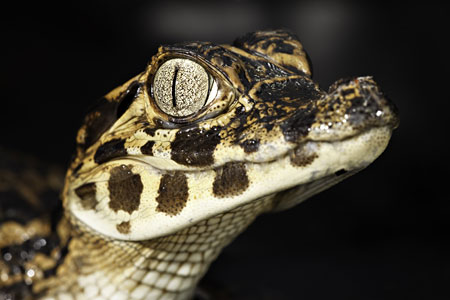
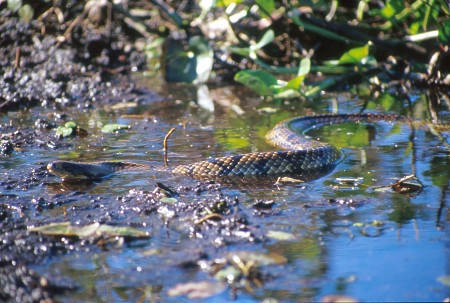
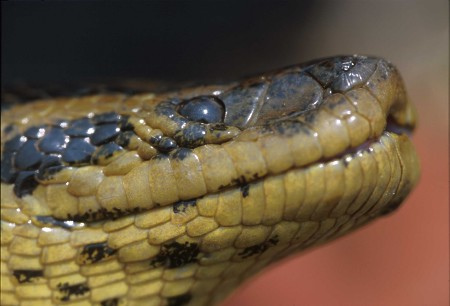


Banner image: Jacaré or Caiman (Shutterstock/ecoventurestravel).
Footer images: Juvenile jacaré (Shutterstock/Dirk Ercken); Anaconda; False Water Cobra (Andrew Mercer)

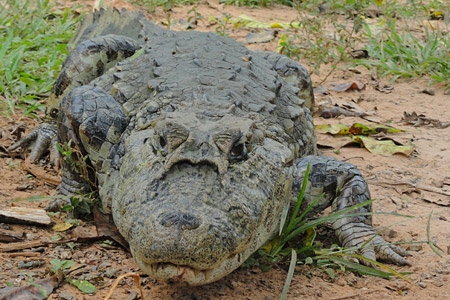
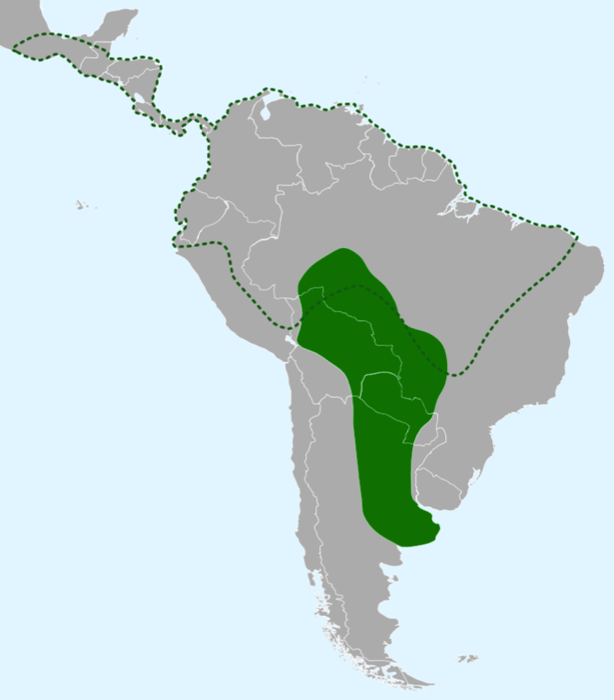
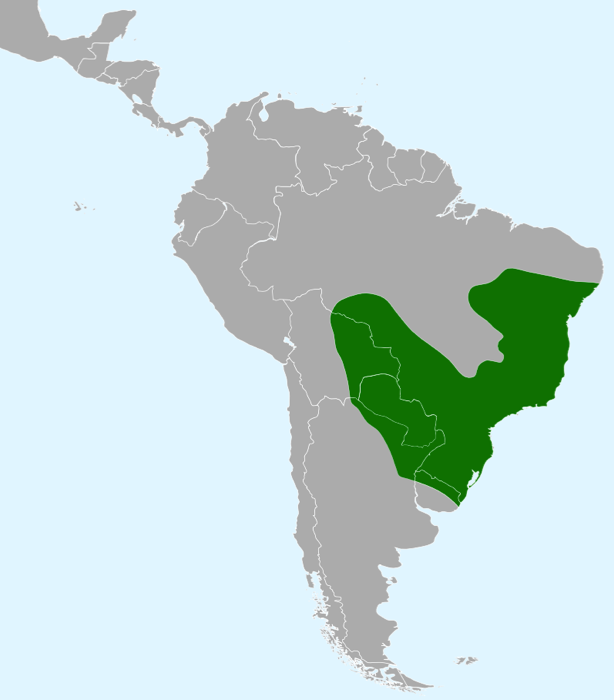
Pantanal Escapes